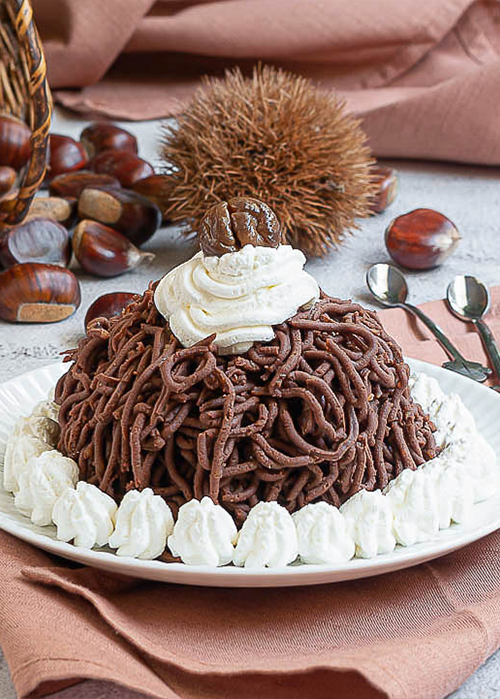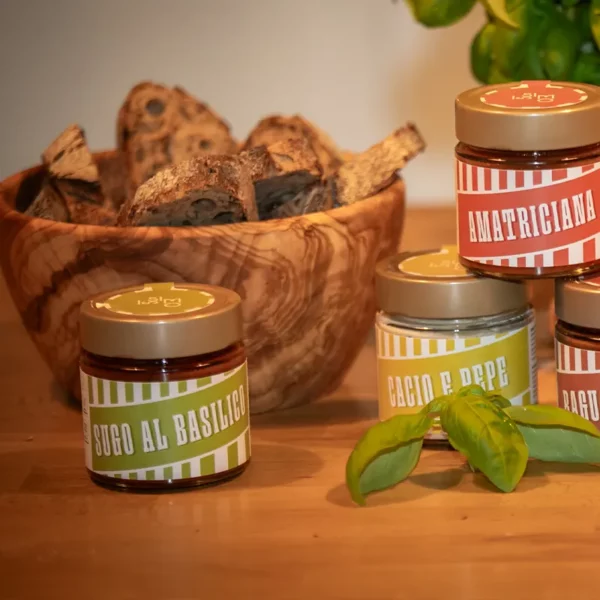- BY ISSIMO
- October 18, 2023
Chestnuts: Italy’s Culinary Gem
Discover the delicious world of chestnuts

Think of fall in Italy, and a few culinary staples come to mind: Figs and black truffle, wild boar ragu and porcini mushrooms. One more thing to add to the list? Chestnuts. Baked or oven-roasted, turned into flour or made into jam, the sweet, nutty, earthy delights have a rich history in the Italian kitchen, where they have earned their place as a cherished culinary treasure. To celebrate National Chestnuts Day in Italy, here’s all you need to know about how they’ve become an integral part of Italy’s culinary canon.
Historical roots and regional variations
Chestnuts, known as “castagne” in Italian, have a history that dates back to ancient times in the boot-shaped country. Back in the days, they were a staple food for the Romans, and played a pivotal role in nourishing the population during periods of scarcity – so much so, in fact, that through the centuries they began to be referred to as “the bread of the poor.”
Over time, they eventually evolved from basic sustenance to an essential ingredient in a wide array of regional dishes, each one still very much beloved today.

In Northern Italy, particularly in Piedmont and Lombardy, chestnuts are celebrated in savoury dishes like chestnut and mushroom risotto or hearty chestnut soups. The Piedmontese even have a traditional chestnut dessert known as “Montebianco,” where chestnut puree is piped into a mound resembling a snow-capped mountain.
In Tuscany, chestnuts shine in sweet creations such as “castagnaccio,” a dense chestnut cake made with rosemary, pine nuts, and raisins. Moving to Lazio and Campania, roasted chestnuts – “caldarroste” – are a popular street food, especially during the winter months, while in Sicily, you can find chestnut-based desserts like “pani di castagna,” a sweet bread made with chestnut flour.
A versatile nut

In the Bel Paese, chestnuts are employed in various culinary forms, including roasted, boiled, dried, or ground into flour. The flour, in particular, is prized for its ability to transform into pasta, bread, or pastry, giving a delightful nutty flavour to a wide range of dishes. They’re also, just as importantly, a symbol of the autumn harvest season, starting in October. Visit the country around this time, and you’ll find families and communities come together for chestnut festivals, or “sagre,” where roasted chestnuts are enjoyed alongside wine and music.

Above all, though, chestnuts symbolise tradition, heritage, and the ability to transform a simple ingredient into a wide array of culinary delights. They have proven to be a resilient and cherished component of Italy’s culinary canon, contributing to the country’s rich gastronomic tapestry.
Looking for chestnuts in Ischia
Known for its rich and diverse landscape, Ischia, home to our beloved Mezzatorre, is a bit of a chestnut heaven this time of year. Surprised? Don’t be. From wild nature to lush forests, the Green Island is the perfect ecosystem for the chestnut tree, and a great base from which to immerse yourself in the world of castagne.
The best way to do so, of course, would be by hiking Mount Epomeo – Ischia’s tallest peak – with FORADAY, the bespoke tour company we work with at Mezzatorre.
On a five-hour adventure, among rows of vines and wooded paths, expert guides take you to discover the products of the undergrowth typical of the autumn period, including of course our clever nut, which you’ll collect as you walk through the woods. The experience ends at the home of a farmer family, where, with the help of the hosts, you can personally have a go at grilling your harvested bounty – rigorously accompanied by Novello wine typical of the autumn period, of course. Check out the Mezzatorre website to find out more!



